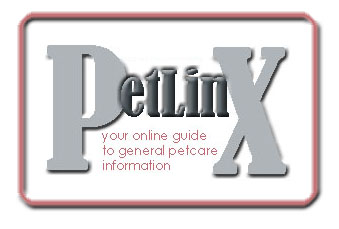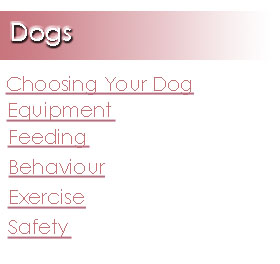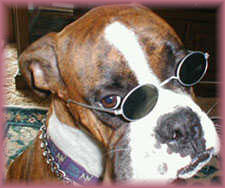| |
|
|
|
|
 |
 |
 |
 |
 |
 |
 |
 |
 |
 |
 |
 |
 |
 |
 |



What are you doing for the next 10 or 15 years? This may seem like a silly question, but it's the first thing you should ask yourself when you're considering bringing a puppy home. Are you prepared? If you're not sure that you have enough free time to dedicate to a dog — including two walks a day, playtime and cleanups — you might consider caring for a vacationing friend's pet. Or try fostering a dog from your local humane society for a week or two to get a better feel for what dog ownership will entail.
Still not sure? Maybe you need to mull it over more. Remember, it's easier to wait until your life can naturally accommodate a canine housemate than it is to try to make radical readjustments after adopting a dog.
Some dogs are allowed to eat all day; that is, food is left in their bowls at all times. This constant availability of food can lead to an overweight dog. Treats and snacks add up in calories, too. To check your dog’s body condition, do the "rib test." Run your hands on either side of his body along his rib cage. You should be able to feel the outline of his ribs. With an overweight dog, you might not be able to make them out at all. On the other hand, if the ribs are too prominent, the dog is underweight. In either case, visit the vet to rule out any health problems: Dogs may gain or lose weight with illness. You may see other symptoms; for example, dogs suffering from kidney problems will also urinate and drink more, and may vomit and be depressed.
Your vet can recommend dietary modifications or special foods, and for an overweight dog, probably an exercise program as well. It’s vital to get a chubby pup back to a healthy weight, since overweight dogs are at risk of diabetes, heart problems and cancer, among other things. Keep track of all the extra bits of food given outside of mealtimes, and be more stingy in doling out treats, or ask your vet for ideas on healthier alternatives. Underweight dogs, too, are at a higher risk for all types of illness, due to their reduced ability to fight infection, decreased reserves of fat and energy, and poor healing ability. These dogs may need dietary supplements to bring them back into the pink of health. back to top
Be Prepared! Before you head out to pick up your new four-footed family member, you need to prepare. Buy a flat collar and leash, and make sure you have those with you when you go to get the dog. A puppy's neck will grow — and grow fast — so be prepared to replace the collar a few times. Fit the collar so that there is just enough room for one or two fingers to slip between the collar and neck. Flat collars may be nylon, leather or some other sturdy material, but don't purchase a very thin one. It may dig into the dog's neck when you tug on the leash.
Choke collars may be used for training, but don't use a choke as your dog's permanent collar. The movable end ring can get caught on anything, tightening the collar around the dog's neck as he struggles against it. Or the chain itself can get caught on the dog's lower jaw — an uncomfortable and frightening experience for your pooch. Get proper identification tags, and make sure they indicate your name, address and phone number. Later, you'll need license tags from the city — if required — as well as veterinary tags indicating that your dog has been properly vaccinated.
Food and water dishes (plastic or metal) should be deep enough to hold adequate nourishment, but not so deep that your dog's ears droop into the bowl. back to top
Domestic dogs have inherited some of the sensitivity to the pack mentality and hierarchy that help keep the peace in wolf packs. As with wolf pups, the communicative behaviors signifying dominance and submission are often incorporated into dogs’ play behavior. Whether a dog on its back is just having fun or is trying to appease dominant dogs would depend on whether this scenario was preceded by play bows or by aggressive threats by standing dogs. back to top
All work and no play makes Jack a dull boy, so the saying goes. Fido, too, becomes dull without the mental and physical stimulation provided by play and exercise. These twin activities give the inquisitive dog a natural outlet for energy, alleviate boredom and reduce destructive behavior. Properly handled, play and exercise not only meet physical needs, strengthening canine bodies, but they also cement the human-dog bond.
Make play a reinforcement of obedience training by periodically stopping the action and giving a command such as sit-stay; once the dog has successfully complied, release him and play again. In this way, the continuation of play is the reward. If you're using a ball or toy, enforce the "out" command, and then give back the object as his reward for giving it up. back to top
Learning to read a dog is much like studying a foreign language. It requires concentration and recognition that communications can have quite different meanings in different cultures and depend on the context within which they are sent. Dogs bark, whine and growl, but mostly they "speak" via a body language designed to be understood dog-to-dog. The meaning may not be intuitively obvious to humans; decoding requires some practice. To understand "dog" successfully, we must stretch beyond ourselves into canine culture. What are the rewards of making this effort?
Clearly a better reading of unknown dogs can prevent the occasional nip. But far more importantly, we gain the chance to interact more fully with the dogs that share our lives. We can reach more of an "inter-species" understanding and deepen our bond by our ability to communicate. It seems only fair. Over the centuries, dogs have become very adept at interpreting human body language and even at learning spoken words and hand signals. Now it's our turn. back to top